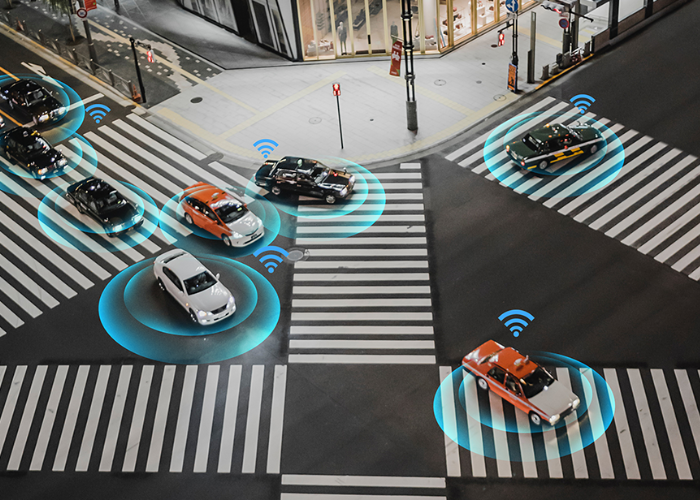Exploring Different Applications of Embedded System

Embedded systems and embedded technology solutions have become an integral part of our everyday lives. From our smartphones to cars, home appliances, and medical devices, embedded control system design can be found virtually everywhere. As this technology continues to advance rapidly, it is opening up new possibilities across industries. In this article, we will explore some of the key areas where embedded systems are playing a crucial role and enabling innovation.
- Automotive Industry
The automotive sector is one of the early adopters of embedded technology and remains one of its largest consumers. Modern vehicles have embedded systems controlling everything from engine management, transmission control, and anti-lock braking systems (ABS) to advanced driver assistance systems like automatic parking, collision detection, and more.
As vehicles get smarter and move towards autonomy, they are increasingly reliant on sensor data and connectivity. This is enabled by onboard embedded devices that can process information in real time and execute appropriate actions. Embedded technology in automobiles maximizes efficiency, enhances safety, and customizes the driving experience. With innovations in electric and hybrid vehicles, embedded systems are also facilitating greener transportation.
- Industrial Automation
Industrial automation relies extensively on intelligent embedded control system design. Advanced programmable logic controllers (PLCs) and dedicated microcontrollers are widely deployed for process control and machine automation across factories and plants globally.
Embedded devices monitor production systems, capture sensor data, regulate actuators, manage alarms, and communicate operational status. Tighter integration between industrial networks, equipment, and analysis software is leading to smarter and more flexible automation using embedded technology solutions. Automation controllers can also connect with enterprise systems to enable better coordination and process optimization.
- Medical Devices
Healthcare is another key application area that benefits immensely from advances in embedded technologies. From large equipment like MRI machines and CT scanners to portable medical electronics like hearing aids, blood glucose meters, and wearable health trackers, embedded systems play a vital role.
Embedded hardware and software ensure the smooth and safer operation of medical devices. They enhance reliability, accuracy, and the user experience while also meeting stringent compliance standards. Embedded control system design also allows remote diagnostics, preventive maintenance, and continuous upgrades of healthcare equipment over time. With connected infrastructure, medical devices powered by embedded solutions can transform patient care.
- Consumer Electronics
Modern consumer electronics like smart TVs, gaming consoles, home automation systems, security cameras, etc. exemplify the transformative potential of embedded systems. The underlying hardware provides the core functionality, while software adds a layer of smartness and connectivity. Together, they augment the comfort, safety, and efficiency of everyday products.
The embedded components crunching away inside popular gadgets we use enable complex tasks like media streaming, voice and gesture control, motor management, and wireless communication. Rapid prototyping using modular embedded toolkits has shortened development cycles, allowing faster rollout of innovative electronics to consumers.
- Robotics and drones
Robots designed for industrial, personal, or commercial use are becoming ubiquitous thanks to embedded technologies. Embedded components like microcontrollers, sensors, and power systems form the basic scaffolding for robotics. The intelligent software algorithms running on onboard chips guide key robot behaviors: navigation, mechanical movement,manipulation, human/environment perception, etc.
Similar principles underpin drones, which are transforming functions like transportation, photography, surveying, and inspection using embedded aerospace avionics. The use of open-source embedded platforms has greatly accelerated the adoption of robotics and drone technology across various industries.
- IoT and Embedded Design
The Internet of Things (IoT) ecosystem, which promises a connected world, is fueled by advanced embedded devices with processing and wireless capabilities. Be it an inventory management solution for warehouses or smart meters for efficient energy use, embedded systems make IoT applications commercially viable.
Embedded hardware design needs to account for interfacing sensors, handling communication protocols, and running lightweight machine learning algorithms reliably while being cost-effective. This drives innovation in embedded device architecture, development frameworks, and deployment models tailored for IoT environments.
- The Future with Embedded Systems
Embedded systems anchor a steadily growing multitude of products and solutions influencing human lives. Rapid strides in semiconductor fabrication, allowing more powerful and energy-efficient chips, underpin these innovations in embedded control system design. Domain-specific processing platforms are evolving fast to address the unique needs of different embedded devices in areas like automotive, industrial, and home automation.
Sophisticated tools for embedded software development are also reducing time-to-market while enhancing quality. As embedded technology gets exponentially faster, more affordable, and more capable, it finds new applications previously unimagined. Embedded systems and solutions therefore hold exciting long-term promise across engineering domains as an indispensable catalyst for future progress. The reach expands from consumer goods, vehicles, and energy infrastructure to smart cities and industrial-grade IoT, transforming how we live and work.
- Defense Equipment
Mission-critical defense equipment like weapons systems, avionics, and satellites rely on hardened embedded systems to operate efficiently in harsh conditions. Embedded devices here need to withstand large temperature variations, shocks, and radiation while delivering real-time, reliable capabilities. Right from radar and sonars to missile guidance systems, communication infrastructure, and wearable combat gear, customized embedded control system design is vital for defense applications. Stability, security, and performance drive innovations in electronic hardware and software for military use.
- Space Tech
Satellites and space probes serving various scientific and commercial needs depend extensively on electronic embedded systems built to survive the rigors of space. Embedding automation and intelligence in space-based equipment has enabled their expanding capabilities over time. Embedded systems play a key role in launch vehicles, in-orbit satellites, and deep space exploration programs. They are critical to routines like orbital transfers, navigation, telemetry, and space imaging, as well as operating experiments and instrumentation via remote automation in the harsh extraterrestrial environment.
Conclusion
The embedded systems and hardware engineering service are driving innovation across multiple industries today. Cars are becoming more autonomous, factories are becoming more efficient, medical care is becoming more responsive, and household electronics are becoming smarter with embedded control system design. Embedded devices, along with connectivity and data-driven software intelligence, are also accelerating the adoption of robotics and IoT solutions globally. Advances in embedded technologies, intertwined closely with the proliferation of tiny, powerful processors, continue to push new frontiers in terms of real-time performance, reliability, security, and cost efficiency, benefiting consumers and businesses worldwide. The future powered by embedded systems looks smarter and more connected than ever.




